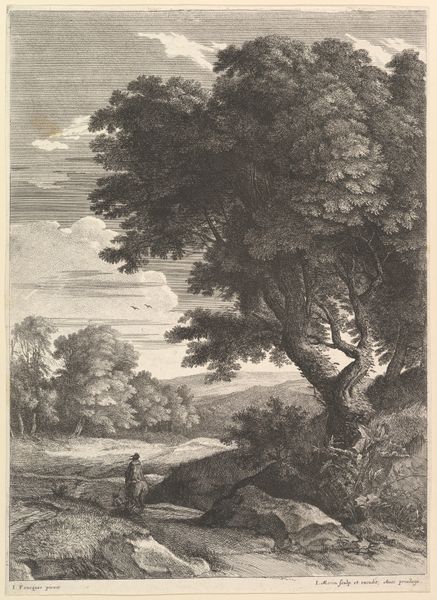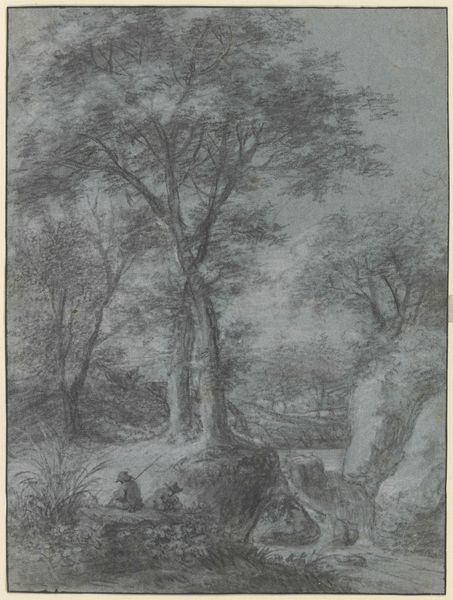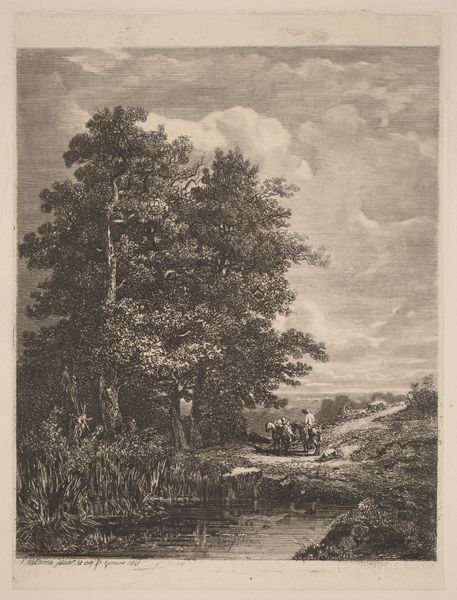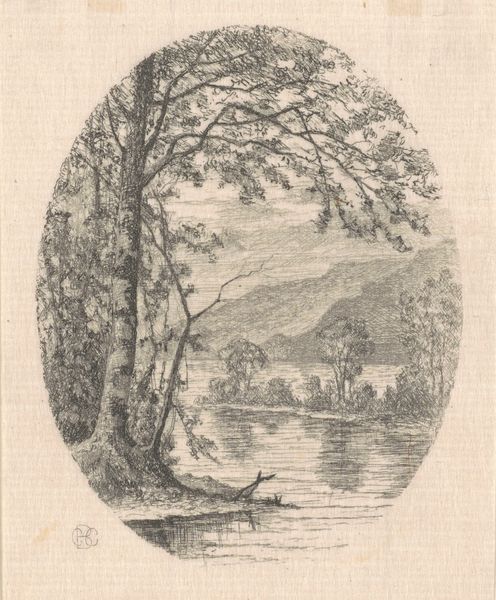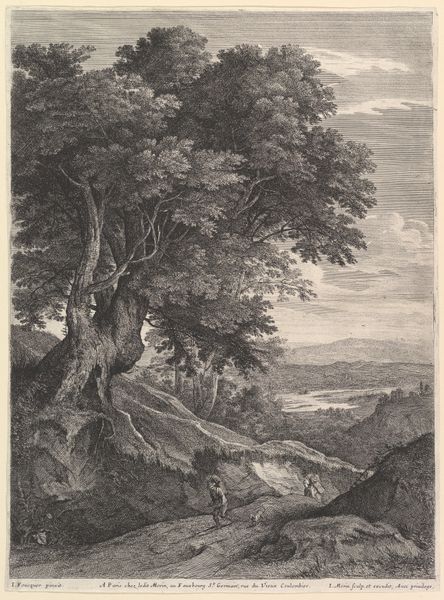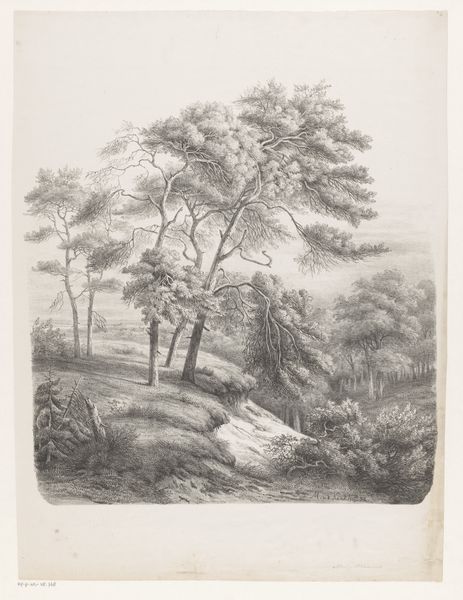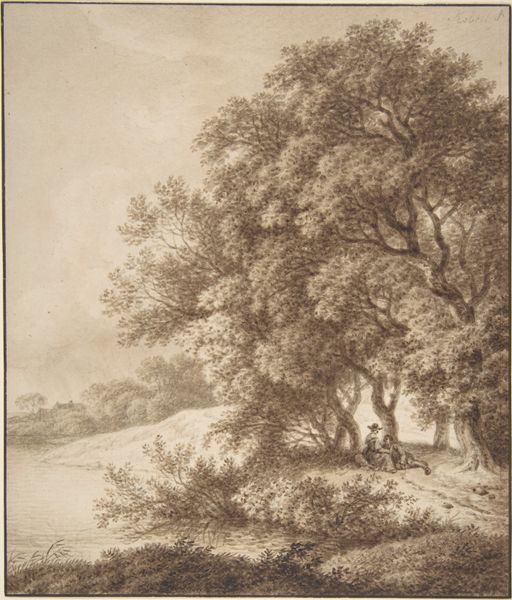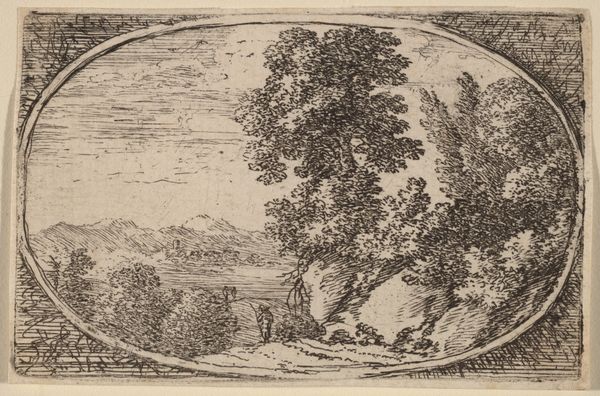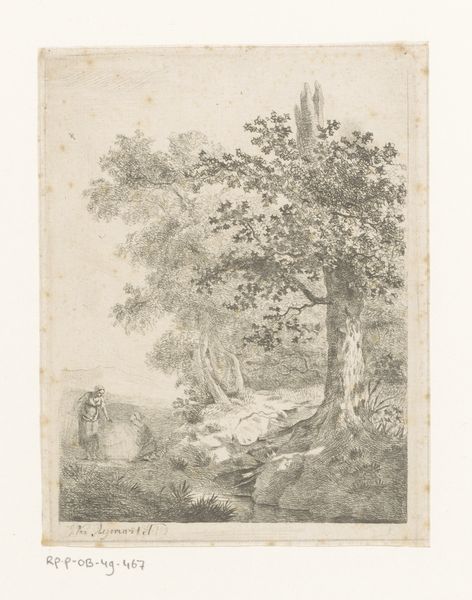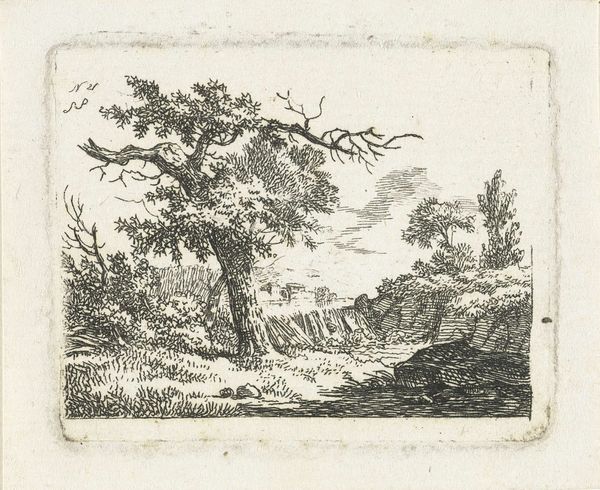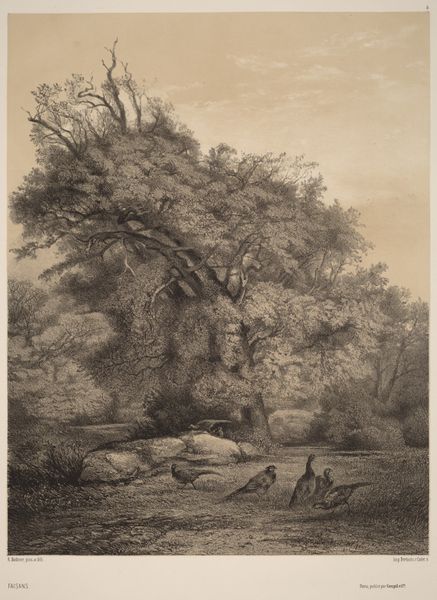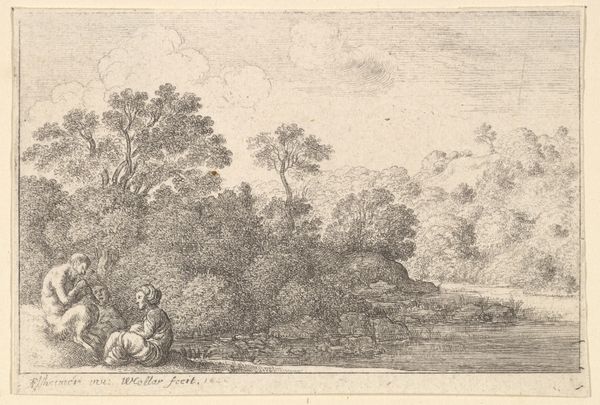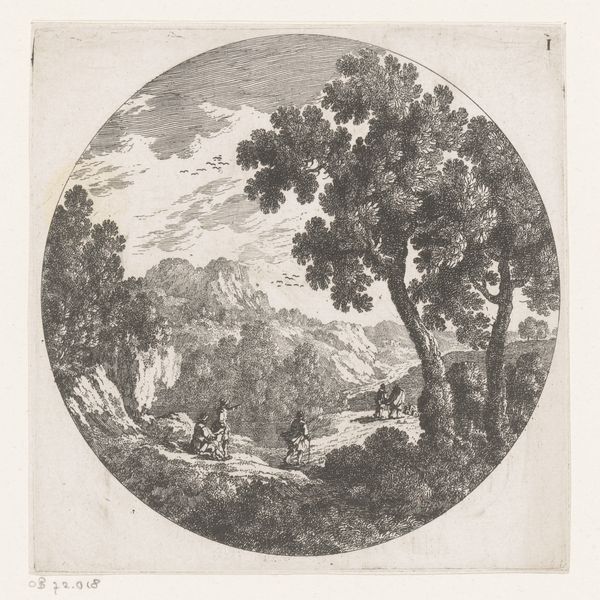
print, etching
# print
#
etching
#
landscape
#
pencil drawing
#
realism
Dimensions: image (irregular): 8.26 × 7.3 cm (3 1/4 × 2 7/8 in.) sheet: 9.37 × 8.73 cm (3 11/16 × 3 7/16 in.) support: 30.48 × 24.29 cm (12 × 9 9/16 in.)
Copyright: National Gallery of Art: CC0 1.0
Curator: Here we have Carl C. Brenner's "Little Cascade," an etching believed to be from the 1870s or 1880s. Editor: It feels intimate. Small in scale, the swirling water gives way to jagged rock. Almost like the romanticism of Courbet, only much less grand. Curator: Brenner's landscapes often sought a connection between humanity and nature. In the 19th century, landscape painting provided a unique arena in which concepts of nationhood, gender roles, and class differences were debated. Editor: The way he layers the etching, cross-hatching it so intensely to create dark areas…you can almost feel the effort that went into constructing the illusion of light and shadow. It is not easily legible because it’s as though there’s this veil of darkness. What's the source for this almost Gothic sensibility? Curator: Perhaps. Consider, however, the artistic movements arising in Europe then. The French Barbizon School focused on rendering the specific textures of the natural world. And in the States there was the Hudson River School. What are we to make of the implications for how landscapes shape our relationship to nationhood if this scene is intentionally obscure? Editor: The medium itself—etching—has this alchemical quality. Copper plates, acid, intense labor...It all accumulates in the image. What’s absent is any discussion of labor or working-class concerns, it appears to reproduce idealized concepts of nature as belonging to a higher class. Curator: Interesting perspective. While the etching medium inherently embodies materiality and labor, your observation about its connection to class echoes a vital debate regarding ownership of the landscape. Editor: Yes, this piece provides insight into the ways landscape, material, and class intersected in American society in the late 19th century. The "how" speaks to who it’s for, and ultimately who it represents. Curator: It makes me appreciate Brenner's awareness in addressing the tension between idyllic visions of the land, and their underlying class dimensions. Editor: It certainly does offer food for thought on our conceptions of nature and art.
Comments
No comments
Be the first to comment and join the conversation on the ultimate creative platform.
